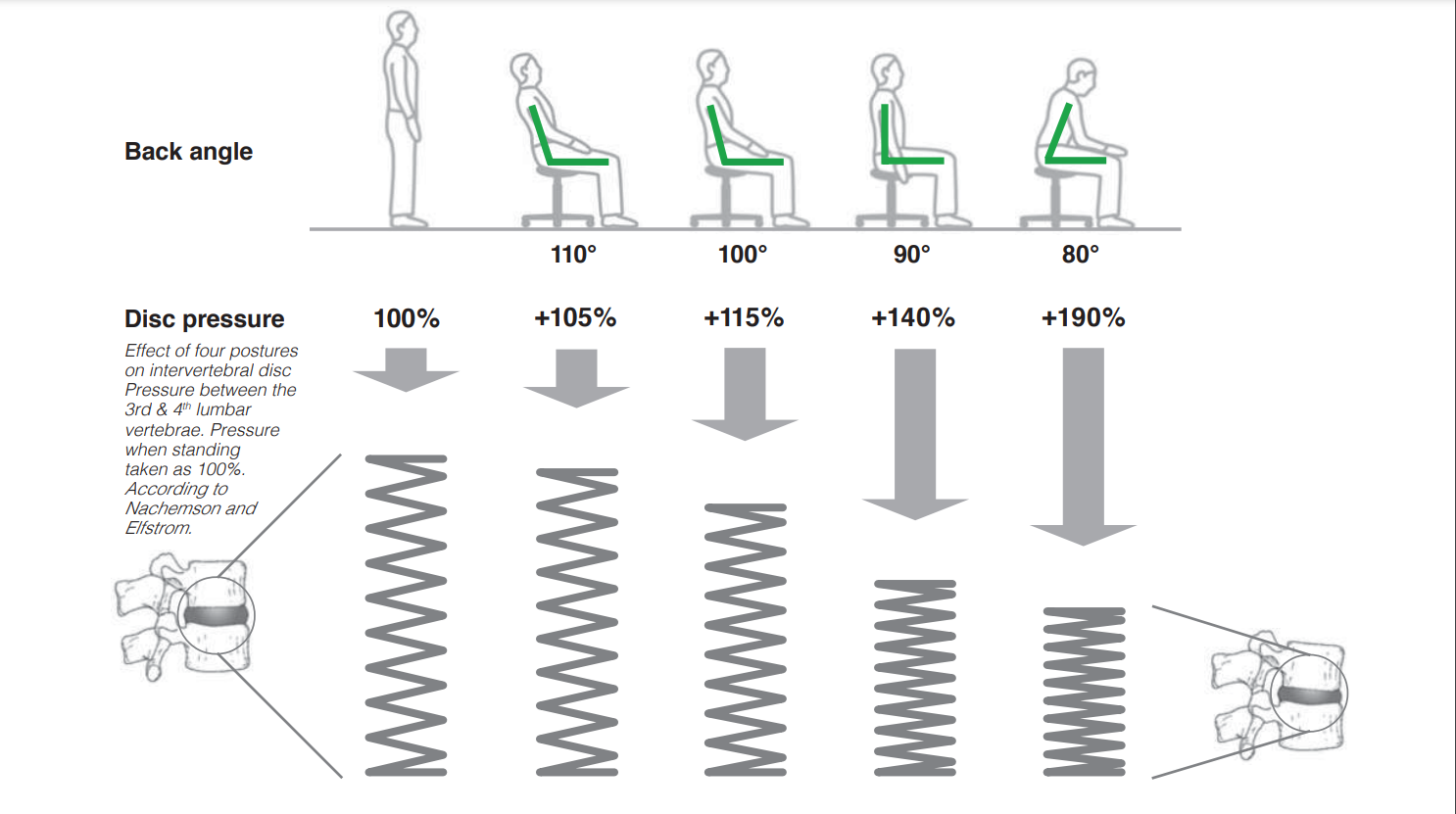
Postural problems when sitting
Changing from standing to a sitting position forces the top of the pelvis to rotate backwards. This flattens the natural lumbar curve in the spine, causing increased, uneven pressure on the intervertebral discs. On leaning forwards (80° angle) to work the spine becomes ‘C’ shaped, further increasing lumbar disc pressure (+190%) and placing extra strain on the supporting back muscles. Movement is restricted with breathing, digestion and circulation adversely affected.
How posture controls disc pressure
The secret of sitting to reduce disc pressure is to encourage the spine to lengthen into its neutral ‘balanced’ position, as in standing. By sitting upright and leaning slightly backwards (100° angle) the top of the pelvis rotates forwards allowing the spine to return to it’s natural ‘S’ shape. There is better balance within the body, with the head centrally positioned over the spinal column. Weight is more evenly distributed across the intervertebral discs and less activity is required from the supporting musculature.
Change to a new working posture
Using a keyboard or writing you tend to lean forwards to work. This encourages a static, slouched posture (80° angle) which is unhealthy. To restore the natural balance in your spine sit upright and set the seat level or slightly tilted forwards for a 100° or 110° body angle to reduce disc pressure. Breathing, digestion and circulation are improved. However, it is important to note that using a forward tilting seat to aid an upright posture is not advisable for certain medical conditions. If there is any pain do not persist; use the seat in a level position or where comfortable. Initially, vary posture regularly to allow muscles to adjust to any new position.

To stabilise the lower spine which in turn balances the upper spine, sit well back in the seat to maintain contact with the backrest. Make sure desk and screen height are correctly adjusted for your stature. By occasionally adjusting seat angle while working you will derive the most benefit, as the body is designed for movement. Change your posture to suit the task. If possible work in a standing position occasionally.
The information provided on this page is courtesy of Alan Glaser at www.sitability.co.uk.
Alan has spent many years designing and manufacturing excellent high quality floating tilt chairs. He is one of the most knowledgeable minds about seating. His own article about healthy sitting is worth reading.
I have known Alan personally over many years and we a share a passion for healthy seating. Please visit his website for more details and workstation solutions, and find his downloadable PDFs below: